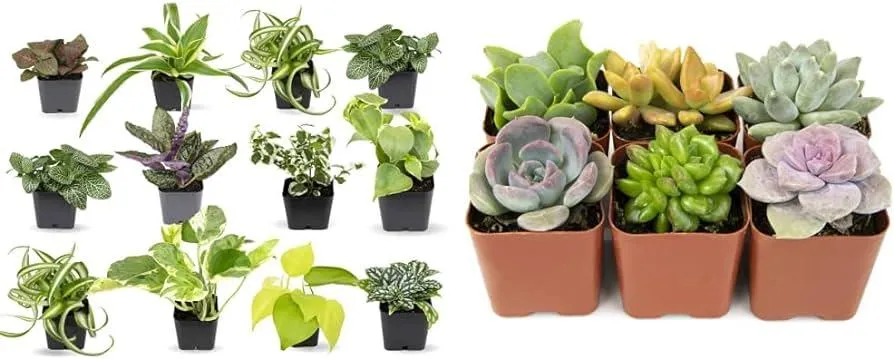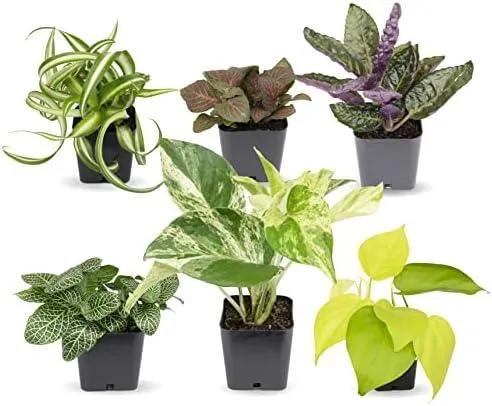Your Ultimate Guide to Growing Hanging Indoor Vines
So you’ve been seeing those cool hanging plant displays all over Instagram and Pinterest lately and you’re thinking “I wanna give that indoor vine life a try!” Well buddy, you’ve come to the right place. In this article, I’ll break down everything you need to know to pick the perfect hanging vines for your space and keep them thriving. From my experience keeping all sorts of trailing plants, there are a few things new plant parents usually wonder about. Let’s dive in!
Choosing the Right Vines for Your Home
With so many gorgeous trailer options out there, deciding what to get can feel overwhelming. Here are some key factors to consider when browsing vines:
- Light conditions – Make sure to match your plants to the light levels in your home. Popular low-light vines like pothos and spider plants are great for indirect sunlight areas. For brighter spots, try devils ivy or heartleaf philodendron.
- Size and growth rate – Do you want a vine that stays petite or one that can trail for feet? Faster growers like Swedish ivy and creeping fig spread out quickly while polka dot plants and micans are more minimalist.
- Watering needs – Some vines like soil to dry out between waterings while others prefer constantly moist soil. Golden pothos and wandering dude are pretty forgiving.
- Aesthetics – Look at leaf shape, color, and texture too. You’ll find everything from variegated vines to heart-shaped purple passion vines.
Browsing local nurseries is ideal for getting your hands on different vines. If you’re shopping online, read product descriptions closely to find the perfect match.
Prepping Your Space and Pots
Once you’ve settled on your vines, it’s time to get them situated. Here are some tips:
- Make sure hanging pots have drainage holes on the bottom for excess water to escape. Terra cotta, plastic, and woven rattan baskets all work well.
- Line pore-free hanging baskets with screen mesh or rocks to allow water to drain through without soil falling out.
- Use well-draining potting mix specifically for houseplants like succulents and cacti. Rice hulls or perlite can be added to regular potting soil for better drainage.
- Place hooks or plant hangers where your vines can trail attractively without blocking walkways or views. Over windows and above seating areas are popular spots.
Having the right set up makes caring for your vines so much easier long term. Spend some time getting your pots and spaces prepped right.
Caring for Your Hanging Babies
Once potted, your vines will need consistent TLC to thrive. Here are the basics:

Watering
Check soil moisture frequently with your finger. Water thoroughly when the top inch feels dry. Allow soil to dry out in between for most varieties. For fast draining pots, water even less. Overwatering is a major killer of indoor vines!
Light
Trailing plants generally prefer bright, indirect light. Rotate pots weekly so all sides receive sunlight evenly. Some vines like stronger light, so adjust based on individual needs.
Fertilizing
During active growing periods April-September, use a diluted liquid houseplant fertilizer every couple months. Read label instructions carefully to avoid burning roots.
Pruning
Snip off any non-vining sections that don’t cascade beautifully. This encourages a more trailing growth habit. Deadhead spent blooms to encourage further flowering on select vines.
Repotting
Only do this when roots fully fill the pot. Gently tease apart the root ball and transplant up one size using fresh potting mix. Repot in spring when vines are actively growing.
Following these simple care steps will reward you with lush, healthy indoor vines for seasons to come! Feel free to experiment after getting the basics down.

Dealing with Pests and Problems
No plant collection is perfect – things may still go wrong sometimes. Here are some potential issues and solutions:
Spider Mites
These tiny pests leave webs and damage leaves. Isolate the plant and wash leaves with a gentle insecticidal soap. Keep vines away from vents and sunny south windows where mites thrive.
Mealybugs
Fluffy white spots that suck sap. Wipe clusters away with cotton balls dipped in rubbing alcohol. Repeat weekly until gone. Neem oil spray also works as a natural pesticide.
Yellowing Leaves
Could mean overwatering, underwatering, or nutrient deficiency. Check soil moisture and adjust care. If persistent, flush pot with water and fertilize weakly to revive.
Browning Tips
Dry air or incorrect watering are common causes. Try misting regularly and checking for moisture retaining crystals. High humidity trays may help certain varieties.
With some TLC and prevention practices, your vines should stay healthy and thriving for years to come!

Final Thoughts
Hanging plants add such a lively, jungle vibe to any space. Hopefully this guide gave you the basics on picking, potting, and caring for some lovely trailing plants. Let me know if you have any other vine questions! Wishing you the best of luck nurturing your new green hangers. May they bring you endless joy – except maybe when it’s watering day, amirite?! Happy planting folks.
Factors to Consider When Choosing Indoor Vines
| Vine Type | Growth Rate | Light Needs | Water Needs | Good For |
|---|---|---|---|---|
| Pothos | Fast | Low | Let Dry | Beginners, Offices |
| Philodendron | Moderate | Medium | Let Dry | Low Light Areas |
| English Ivy | Slow | Low-Medium | Let Dry | Trailing Over Shelves |
| Spider Plant | Moderate | Bright Indirect | Let Dry | Adds Greenery |
| Swedish Ivy | Fast | Low-Medium | Keep Moist | Adds Fullness |
| Peperomia | Moderate | Low-Medium | Let Dry | Low Light Spots |
FAQ
-
Can indoor vines be grown without sunlight?
Kinda. While vines basically need sunlight to thrive, you can sort of grow some low-light varieties under growing lamps if the situation demands it. Bear in mind they won’t produce as amazingly without real sun though. Might be better to use fake vines instead if sunlight is scarce.
-
How do I care for hanging vines?
Watering depends on the kind, but most indoor vines need water whenever the soil starts getting dry. Make sure the drainage holes allow excess moisture to leave so the roots don’t get soaked. Fertilize every few months during growing season. Prune off any pieces that appear sickly. Despite your best efforts, some vines may not make it. Don’t lose heart – keep trying different types till you find what works!
-
What’s the best way to hang vines?
You got a few options. For lighter vines, thread string or fishing line above and let the vines trail down. Heavier varieties do better with cages, trellises or poles installed high on the wall. Supposedly ancient Romans hung vines from wheeled frames that could be rolled around, exposing the vines to different light levels throughout the day. Wonder if thats true? Or just an old wives’ tale?
-
Will indoor vines grow very long?
It depends. Faster growing vines might stretch many feet in a year under perfect conditions, though lightning-fast growth usually means low resilience. Other, slower varieties max out at a few feet. Maybe their roots simply can’t develop deep enough indoors? On the other hand, English ivy is legendary for climbing stories high on buildings over decades. Persistence and pampering pays off for the more ambitious vines!
-
What happens if a vine outgrows its space?
When this occurs, you kinda gotta take action before the plant gets overcrowded and unhealthy. Prune it back severely or transplant portions to new pots. Another choice appears to train the vine to grow more horizontally rather than just straight up. With time and patience, you can coax vines into pleasing flowing shapes that maximize the available area. Getting expert advice helps with tricky training methods.

-
Will animals eat my indoor vines?
Probably not, but its possible. Pet rodents like hamsters and guinea pigs have been known to nibble vines here and there. Dogs might chew weaker vines if bored or teething. Most housecats leave plants alone, but you never know – cats are cathemeral creatures! Best to hang vines up high or behind barriers just in case. Maybe consider toxin testing before letting pets roam free near edible garden varieties.
